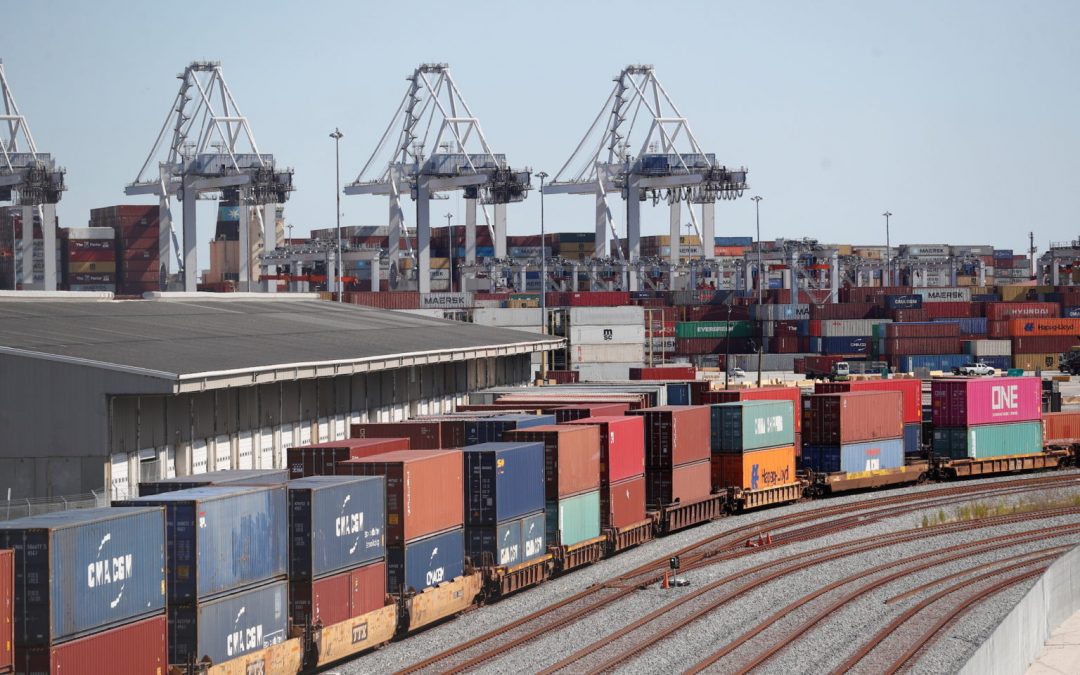Rates for transporting chemicals on various modes of transportation continue to face downward pressure as reduced demand has helped ease the strains on supply chains seen throughout most of last year.
Ocean freight rates for liquid tankers and shipping containers softened this week and spot trucking rates edged lower, highlighting this week’s logistics update.
LIQUID CHEMICAL TANKERS
US chemical tanker freight rates held mostly steady this week – except for the US Gulf (USG) to Rotterdam trade lane, which saw lower rates for all parcel sizes assessed by ICIS.
The USG to Rotterdam trade lane has softened a bit more as many are preparing for end of March conferences.
This route could continue facing downward pressure as there remains ample tonnage available for the rest of the month.
Rates are also falling for shipping containers from east Asia and China to both US coasts.
According to data from online shipping marketplace and platform provider Freightos, rates are down by another 3% on each route.
Rates to the West Coast are now 94% lower than at the same time a year ago.
Rates to the East Coast are down by 88% from year-ago levels.
Reduced demand is keeping downward pressure on rates along these trade lanes, but the National Retail Federation (NRF) is anticipating volumes to slowly start rising although they are likely to remain below 2022 levels through mid-summer.
According to its most recent data, NRF said retail sales slipped slightly in February, but core spending rose.
NRF President and CEO Matthew Shay said the recent volatility in the banking sector and financial markets are adding to economic uncertainty.
“But the underlying fundamentals in the consumer economy remain on solid footing as jobs and wages are growing and inflation is trending down,” Shay said.
The reduced demand has allowed US ports to work through backlogs, all but completely ending congestion that led to the shift in volumes from the west coast to the US Gulf and East Coast.
An operational update from global shipping major Hapag-Lloyd showed wait times for berths at the East Coast ports of Savannah, Georgia, is down to 1-2 days.
In January, the waiting times were as high as eight days.
Container ships are relevant to the chemical industry because while most chemicals are liquids and are shipped in tankers, container ships transport polymers such as polyethylene (PE) and polypropylene (PP), which are shipped in pellets.
RAILROADS
US railroads continue to submit weekly performance data to the Surface Transportation Board (STB) after the regulator extended the order made in April 2022 to May of this year.
A series of rail accidents over the past month has increased the focus on safety.
Eric Byer, National Association of Chemical Distributors (NACD) president and CEO, speaking to ICIS, said he thinks the time is now for all parties to come together and take proactive actions to improve rail safety and service.
The National Transportation Safety Board (NTSB) announced a special investigation into Norfolk Southern Railway’s safety practices and culture, and a group of senators introduced the Railway Safety Act of 2023.
Norfolk Southern announced a six-point plan that it said will immediately enhance the safety of its operations.
Railroads are vital to the chemicals industry as chemical railcar loadings represent about 20% of chemical transportation by tonnage in the US, with trucks, barges and pipelines carrying the rest.
TRUCKING
The monthly Trucking Conditions Index from FTR Transportation Intelligence showed substantial improvement in January, as stronger freight volume and rates partially offset weaker utilisation and a fuel cost environment that was not as positive as it was in December.
Avery Vise, vice president of trucking at FTR, said overall market conditions for trucking companies remain negative, but there are varying impacts among carriers based on size and type of operation.
“The recent troubles in the banking sector have further increased the degree of uncertainty as the economy and freight markets move toward a post-pandemic norm,” Vise said.
The spread between spot and contract rates widened slightly this week, according to data from FreightWaves Sonar.
Trucking is vital to the chemical industry.In 2020, trucks accounted for 57% of chemical tonnage shipped and 70% of chemical transportation costs, while water transport accounted for 20% of tonnage and 7% of transportation costs, according to American Chemistry Council (ACC) data.
Source: Hellenic Shipping News






